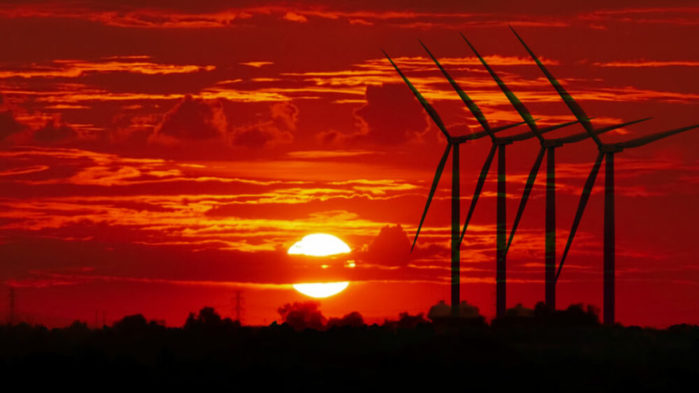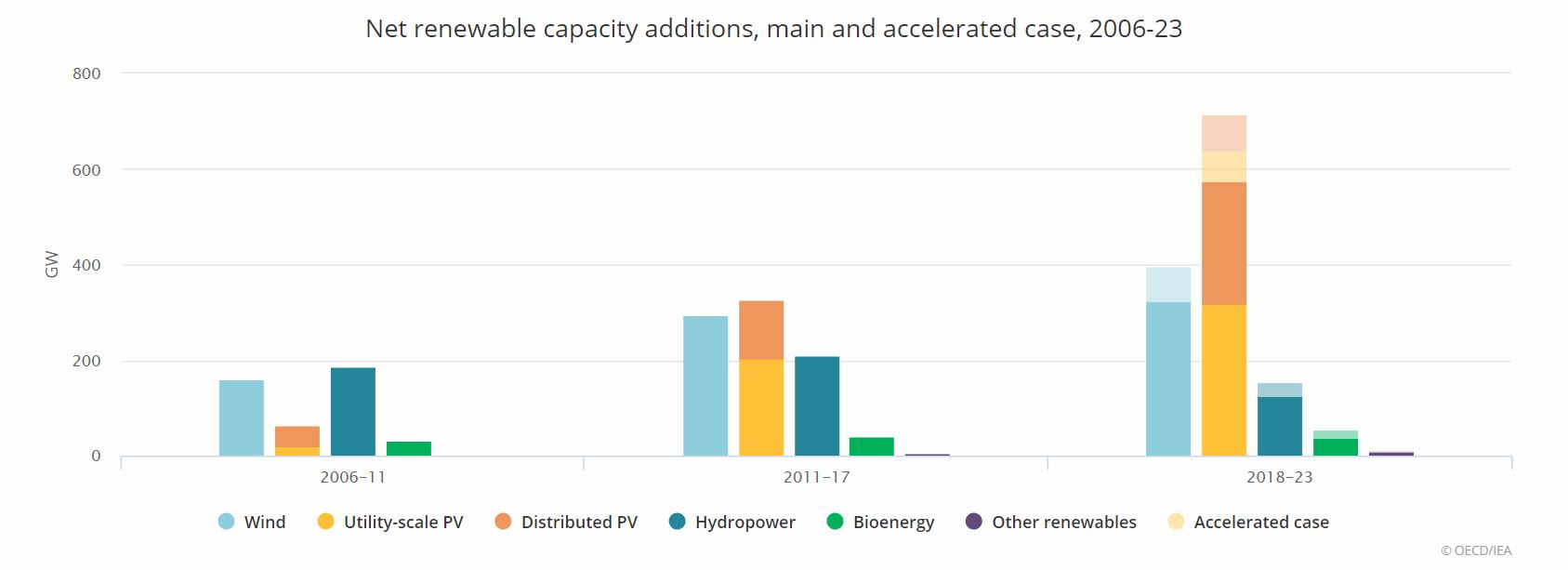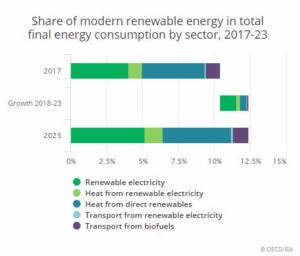30% of Global Electricity to Come from Renewables by 2023 – IEA

According to the International Energy Agency’s (IEA) Renewables 2018 Market Analysis and Forecast Report, the share of renewables in the global power demand will reach nearly 30% (29.4%). In the projected period 2018-2023 renewables will have the fastest growth in the electricity sector, increasing to 30% from 24% in 2017. The IEA, for the record, has almost developed a reputation for mirroring the projections of the fossil fuel industry, and consistently getting their forecasts on renewable energy wrong. The agency has a chequered record of increasing long term forecasts after putting out a headline number that tended to be very conservative, to put it gently.
During this period for instance, renewables are forecast to meet more than 70% of global electricity generation growth, led by solar PV and followed by wind, hydropower, and bioenergy. Hydropower remains the largest renewable source, meeting 16% of global electricity demand by 2023, followed by wind (6%), solar PV (4%), and bioenergy (3%).
As per the main case forecast in the report, taking into account prevailing market and policy framework, renewable capacity is expected to grow by over 1 TW, experiencing a 46% growth over the next 5 years. PV accounts for more than half of this expansion, driven by supportive government policies and market improvements across most regions. Wind remains the second-largest contributor to renewable capacity growth, followed by hydropower and bioenergy. Wind capacity is expected to expand by 60%, or 324 GW, with offshore wind accounting for 10% of that growth. Growth prospects for hydropower and bioenergy are both slightly more optimistic than last year, mostly owing to developments in China.

The share of renewables in meeting global energy demand which contains electricity, heat and transport is expected to grow by one-fifth in the next five years to reach 12.4% in 2023. Renewable heat consumption is expected to increase by 20% over the forecast period to reach a share of 12% of the heating sector demand by 2023. Renewables in transport have the lowest contribution of all three sectors, with their share growing only minimally from 3.4% in 2017 to 3.8% in 2023.

In the same period, breaking down the numbers in terms of individual countries, Brazil will have the greenest energy mix (almost 45% of total final energy consumption in 2023), and China will lead in absolute growth. In Brazil, bioenergy consumption in transport and industry is significant, and hydropower dominates the electricity sector. Meanwhile, because of policies to decarbonise all sectors and reduce harmful local air pollution, China leads global growth in absolute terms during the forecast period, surpassing the European Union to become the largest consumer of renewable energy.

In the European Union, greater use of renewables is spurred by binding renewable energy targets for 2020 and 2030 as well as implementing country-level policies and improved energy efficiency.
To meet long-term climate and other sustainability goals, renewable energy development in the heat, electricity and transport sectors must accelerate. Should progress continue at the pace currently forecast, the share of renewables in final energy consumption would be roughly 18% by 2040 – significantly below the IEA Sustainable Development Scenario’s benchmark of 28%.
Often overlooked when discussing renewables, the report highlights that modern bioenergy (excluding the traditional use of biomass) was responsible for half of all renewable energy consumed in 2017 , providing nearly four times the contribution of solar photovoltaic (PV) and wind combined.

Bioenergy is predicted to be the largest source of growth in renewable consumption over the period 2018 to 2023. Bioenergy, as solid, liquid or gaseous fuels will account for 30% of the growth in renewable consumption in this period as result of the considerable use of bioenergy in heat and transport. Other renewables have less penetration in these two sectors, which account for 80% of total final energy consumption. In 2023, bioenergy will remain the predominant source of renewable energy, although its share of total renewable energy declines from 50%, in 2017, to 46% as the expansion of both solar PV and wind accelerates in the electricity sector.
However, robust sustainability frameworks are key to bioenergy growth. Only bioenergy that reduces life-cycle GHG emissions while avoiding unacceptable social, environmental and economic impacts has a future role in decarbonising the energy system.




